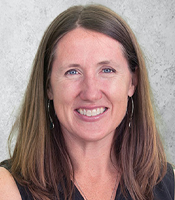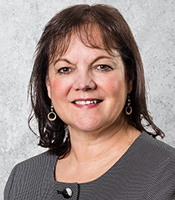Beware of Courtyard Dangers
Kasie Cousino and Angie Szumlinski
7/11/2023
 Just about everyone enjoys sitting in an outdoor courtyard, including residents, especially when the sun is shining and there is a cool breeze. Many centers accommodate these activities and provide enclosed courtyards to enable residents to have accessible “gardens” where they grow tomatoes, flowers, and herbs. Canopies are often provided to protect residents from the sun. However, are you aware of the risks associated with courtyards? Many times, there are few safety measures in place for courtyards.
Just about everyone enjoys sitting in an outdoor courtyard, including residents, especially when the sun is shining and there is a cool breeze. Many centers accommodate these activities and provide enclosed courtyards to enable residents to have accessible “gardens” where they grow tomatoes, flowers, and herbs. Canopies are often provided to protect residents from the sun. However, are you aware of the risks associated with courtyards? Many times, there are few safety measures in place for courtyards.
What type of safety measures are we referring to? Let’s start with environmental risks. Take for example the secured gate.
- Is there grass in the courtyard that requires cutting during the summer?
- Are you using a contracted service that accesses the courtyard through the secured gate?
- Is there a code to enter and does the gate lock automatically when exiting?
- Is there a policy on not “propping” the gate open to make it easier to go in and out when performing lawn services? If so, who is monitoring compliance with the policy?
Consider the walking paths. Many residents living with dementia will walk for long periods of time. If there are walking paths in your courtyard, are they level and free from trip hazards?
How do your residents access the courtyard from inside the building?
- Is there a door to enter the courtyard from inside the building that is locked during inclement weather and off hours?
- Who decides what weather classifies as high-risk?
- Is the inside door alarmed to notify staff when someone enters the courtyard unsupervised?
- Are alarms disengaged during daytime hours?
- Are alarms included in your environmental safety checks?
Then we have the human factor if the courtyard is accessible during daytime hours.
- Are residents allowed to come and go as they wish? What about residents with cognitive impairment/dementia?
- Is there supervision in the courtyard when residents are present?
- How often are rounds being performed in the courtyard to ensure residents are protected from the elements (i.e., sunburn, dehydration, etc.)?
- Are all residents accounted for at meal times to ensure no one is left in the courtyard alone for a prolonged period?
- Are you using sunscreen on every resident going outdoors unless contraindicated (i.e., allergy)?
- Do residents wear sun hats or some headwear to protect them from direct sun?
- Do you have hydration stations in the courtyard for staff to offer fluids, popsicles, or other options during warm weather?
If any of these questions cause you to pause, please read the case studies below. If nothing else, these cases should put all of us on alert.
Case Studies
Courtyards in the summertime can be dangerous. While the outside activity is a draw for many memory care and assisted living residents, prolonged exposure to the elements can be fatal to our elderly loved ones. Thoughtful monitoring must be done, not simply cursory checks.
- In California during the month of August, an assisted living resident went outside in the courtyard in a secured unit without staff knowing. The door chime was non-functioning and had been broken for at least two months without being repaired. Nobody knew that she was out there for 75-90 minutes on a day where temperatures reached 101 on the day in question. The resident sustained severe sunburn with blisters and resulting scarring. Case settled for $500,000.
- On a July day in Utah, a 77-year-old male resident of a memory care unit was seen lying down on a courtyard bench in the sun. Initial temperature reading of this gentleman was 106 degrees. The investigation led to the conclusion that he had been out there for an amount of time between 45 minutes and 4-6 hours with conflicting stories. He sustained sunburn, hyperthermia, encephalopathy, and a myocardial infarction. He expired 11 days later. Case settled for $960,000.
Please make sure that the courtyard is locked and completely inaccessible to residents after a certain time. Sadly, a skilled nursing center in Missouri had a resident who wheeled herself into the courtyard on a winter night and perished. The resident was found at 1:50 am on Christmas Eve outside in the courtyard of the facility, without vital signs. Her death was due to hypothermia. She had exited via a handicapped accessible door that automatically opened by pushing a button or pulling on the door handle. Staff had not noticed her missing for 3 hours due to a combination of shift changes, unfamiliarity with the resident, and lack of protocols to protect against such elopement. This event was highly publicized by media, and the family quickly sued. This resident had relocated from assisted living into this skilled nursing facility eight days before this incident. She was not assessed as an elopement risk. Nobody knows why she went out the door.
Even just remembering that the courtyard is part of the building and subject to that standard of care is important. An Ohio skilled nursing center had a resident who was in the courtyard in his wheelchair, tried to get up, fell, and hit his head. He was observed 15 minutes before the fall seated in his wheelchair in the courtyard drinking milk. Plaintiff attorney specifically alleged that the resident was left unattended: the courtyard was a common space and thus a staff member should have been present. The gentleman suffered compression fractures and a head injury incurring over $220,000 in medical expenses.
 Remember, safety is everyone’s concern. Without a structured program for outdoor activities, your residents and your center could be at risk. Please, take a few minutes to be sure, check your systems, verify compliance, and above all, provide your residents with the ability to enjoy outdoor activities safely.
Remember, safety is everyone’s concern. Without a structured program for outdoor activities, your residents and your center could be at risk. Please, take a few minutes to be sure, check your systems, verify compliance, and above all, provide your residents with the ability to enjoy outdoor activities safely.
 Kasie Cousino is chief operating officer of HealthCap®. She directs all aspects of the carrier-level claims functions and has primary responsibility for managing service providers, overseeing claims data analytics, providing strategic support for HealthCap® and file-level case management. She is a graduate of the University of Michigan with an MBA from The Ross School of Business and a BS in mathematics.
Kasie Cousino is chief operating officer of HealthCap®. She directs all aspects of the carrier-level claims functions and has primary responsibility for managing service providers, overseeing claims data analytics, providing strategic support for HealthCap® and file-level case management. She is a graduate of the University of Michigan with an MBA from The Ross School of Business and a BS in mathematics.
Angie Szumlinski, NHA, GERO-BC, RAC-CT, BS, is director of risk management at HealthCap. She has experience as an owner/provider, administrator, director of nursing, corporate quality assurance coordinator, and independent consultant. She is the nurse planner for HealthCap Risk Management’s American Nursing Credentialing Center’s (ANCC) accredited education program.